
Related
A devastating climate change-fueled wildfire destroyed nearly 1,000 homes outside of Boulder and Denver, Colorado, with little notice last Thursday. The fire was fanned by winds that gusted up to 110 miles per hour, and came after a year of drought across the western U.S. and amid an unusually warm December. We speak with Jennifer Balch, director of the Earth Lab at the University of Colorado, Boulder, who says the climate crisis is extending the scale and scope of wildfire season in the state. “We’ve known that there’s a link between climate change and wildfires for over a decade, and it takes just a little bit of warming to lead to a lot more burning,” says Balch.
Transcript
AMY GOODMAN: This is Democracy Now!, democracynow.org, The War and Peace Report. I’m Amy Goodman.
Yes, in Colorado, the still-smoking remains of homes destroyed by the state’s most devastating wildfires in history are now covered in snow. Last Thursday, fast-spreading, climate change-fueled wildfires tore through the towns of Superior and Louisville, Colorado, suburbs of Denver and Boulder, with little notice, as described in this video by an eyewitness.
EYEWITNESS: We’re across the golf course and a pond. We look out to that. So, as we — I pan to the left here, we see huge fires on the other side of 36 right there, significant fires. And then, over here, more fires.
AMY GOODMAN: The origin of the wildfire is under investigation. The flames were fanned by winds that gusted up to 110 miles per hour. Louisville, Colorado, resident Paul Bassis saw his home nearly destroyed in the blaze.
PAUL BASSIS: Climate change is here now, that this is not some future threat that we have to deal with at some point someday, but this is here and now. … People lost all their belongings, their memories that were in those homes, families that were raised there.
AMY GOODMAN: The Marshall Fire destroyed about a thousand homes and businesses, and at least two people are still missing and presumed dead. It caps a year of drought across the western U.S., came as temperatures in Colorado between June and December were the warmest on record. A report by NOAA, the National Oceanic and Atmospheric Administration’s Drought Task Force, found, without, quote, “stringent” climate mitigation, the region will continue to warm.
For more, we go to Boulder, Colorado, to speak with Dr. Jennifer Balch, director of the Earth Lab at the University of Colorado, Boulder.
Welcome to Democracy Now! It’s great to have you with us, very painful under these circumstances. Can you explain what happened? I mean, you, yourself, one of your own scientists, Matt Ross, lost his home in the fire.
JENNIFER BALCH: That’s right. I have many friends and colleagues who lost homes. This has been a disaster. And I’ll go back to basics to try and explain what happened here.
But you need three ingredients for fires. You need it to be warm, you need fuels to burn, and you need a spark or ignition source. We had all three. And as you mentioned, we had one of the warmest periods during our fall and winter on record for the Front Range, which stretches from Colorado Springs to Fort Collins. And leading up to that, we also had a lot of grasses that grew as a function of a really wet spring. So we had a lot of grass fuel. We had very warm conditions, which meant our fuels were very dry. And we had an ignition source that’s still under investigation.
And what made this fire a disaster were two things. One, there were a lot of homes in the way. Thousands of homes have been built into the landscape between Denver and Boulder over the last several decades. And we had very high wind conditions. So those factors together essentially gave us the right conditions for this type of event and this type of disaster.
In the western U.S., we have millions of homes that are in what is called the wildland-urban interface, or where homes intermingle with vegetation. And work that we did demonstrates that over a million homes, over roughly the last two decades, were within wildfire boundaries, and another 59 million homes were within a kilometer of those wildfires. So we’re living with very high fire risk, and we don’t even know it.
AMY GOODMAN: Can you compare what happened in Boulder to what took place in Oregon and California, the size of these fires? I mean, this isn’t even the largest wildfire in Colorado, but it’s the most destructive in a century.
JENNIFER BALCH: That’s right. And it’s among the most destructive wildfires in U.S. history, as well. It’s not just in Colorado. So, the fact that a thousand homes burned to the ground is remarkable.
And comparing to Oregon and California, I think one thing that’s really important to note here is that this is a winter wildfire. And that is an oxymoron. There’s only two other — there’s only one other time in my career when I’ve talked about snow putting out wildfires. And so, this, to me, is an important signal. And we’ve seen this signal across the West. We know that since the 1980s the amount of forests that have burned has doubled, and that’s directly tied to how warm our temperatures are and essentially how dry our fuels have become. We’ve known that there’s a link between climate change and wildfires for over a decade, and it takes just a little bit of warming to lead to a lot more burning. And that’s what we’re seeing. You know, we no longer have a fire season; we have fires all year round.
And this wildfire is small relative to some of the fires in California and Oregon that happened over this summer and happened over the last summer. It’s 6,000 acres relative to some of the biggest wildfires we’ve seen in the lower 48. We saw a million-acre fire over the last couple of years. So this is a small fire, but what made it is disaster is that there are a lot of homes in the way. And that has to do with our development patterns and how we’re building into flammable landscapes. There’s a lot we can do to change how we build into flammable places.
AMY GOODMAN: What can be done?
JENNIFER BALCH: So, we need to rethink how we’re building. There’s a lot of materials that we can use that are not as flammable. So, when we build with wood siding and asphalt roofing and wood decks, those are all flammable materials. We have building codes that make us install sprinklers inside homes and inside industrial buildings, but we don’t have the equivalent building codes to protect our homes from wildfires. California is on the leading edge of this, and now other states need to think seriously about how we’re building homes into flammable places. All of Colorado is flammable. Our grasses are flammable. Our shrubs are flammable. Our trees are flammable. This is a dry landscape that’s flammable most of the year now. And so we need to rethink how we’re building into these places.
AMY GOODMAN: And the drought. Can you talk about the effect of, what, this historic 20-year drought before the wildfire? From July to December, Denver recorded the lowest amount of precipitation.
JENNIFER BALCH: Yeah. So, moisture is another huge factor. So it’s not only temperature increase, it’s also how much moisture we’re getting. And we didn’t get a lick of moisture in this region before this wildfire started. And so, how much rain or snow we get plus warm temperatures essentially equates to really, really dry fuels, and drier over a period of time. And not only that, but the plants are stressed out, and so they die, and they become dead fuel to burn, which is much more flammable. I mean, essentially, what happened with this fire in the first few hours was that it moved through an open space that was essentially a grassland. It had an entire runway of grass to go through for several miles before it started to hit neighborhoods. And essentially, what that meant was there was a very long active fire line that was moving towards those homes in very dry fuels.
AMY GOODMAN: What do you say to climate change deniers like, well, Colorado’s own Congressmember Lauren Boebert?
JENNIFER BALCH: It’s frustrating. The science has been known for over a decade that there’s a link between warming and wildfires. And we need to move past it and acknowledge it in order to build solutions. You know, we’re essentially sitting ducks to the repercussions of climate change if we don’t acknowledge it. And I think part of the solution is acknowledging it and figuring out how we can live with increasing fire in the future. We’re going to build back, but I hope that Colorado builds back smarter, thinking about how we can build more fire-resilient homes and fire-resilient communities moving forward.
AMY GOODMAN: We’re going to leave it there. I want to thank you so much for being with us, Dr. Jennifer Balch, director of Earth Lab at the University of Colorado, Boulder.
And that does it for our show. I’m Amy Goodman. Remember, wearing a mask is an act of love.

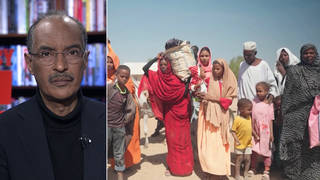
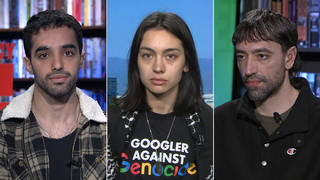
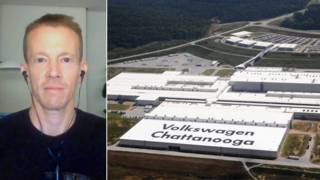
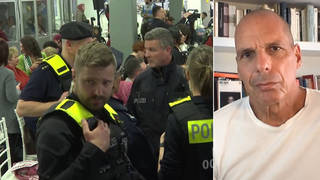





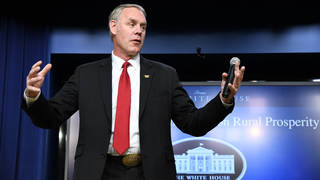
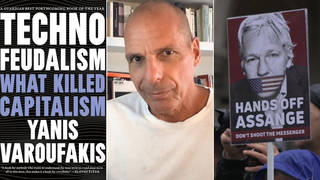
Media Options